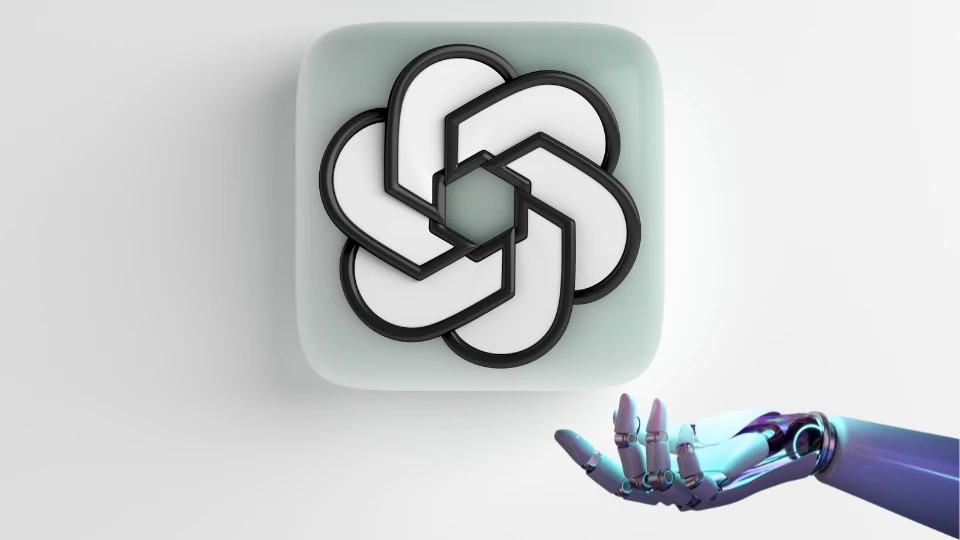As technology continues to advance, it’s hard to ignore the buzz around Artificial Intelligence (AI) and its impact on society. From chatbots to self-driving cars, AI is changing the way we live our lives. But have you ever stopped to wonder why AI is becoming more and more popular day by day globally? Step into the world of AI, where machines have carried on a life of their own. Beyond the domain of sci-fi fantasies, AI is revolutionizing the way we live, work, and play. It’s no longer solely concerning personal assistants and self-driving cars; AI is reshaping whole industries and altering the way we interact with devices.
AI has become the foremost ally in our quest for knowledge and creation. From the world of medicine to the aisles of academia. AI is pushing the boundaries of what we believed was possible. It’s no longer solely about crunching digits; AI is currently capable of interpreting expansive amounts of data. Further uncovering hidden patterns, and making predictions with astonishing accuracy.
Though don’t just take our word for it. UBS research has confirmed that ChatGPT is the “fastest-growing consumer application ever.” With groundbreaking analysis from one of the world’s most esteemed finance and investment firms. This triumph is a testament to the expansive acceptance and adoption of AI in various industries. The opportunities that AI brings to businesses, governments, and people are endless. And we’re only just scratching the surface of what’s feasible. So let’s harness that power and unleash the history of the exciting world of ChatGPT.
Also Read- How To Use GPT-4 On ChatGPT Right Now

So, what is ChatGPT?
ChatGPT, a large language model invented by OpenAI and presented to the public in November of 2022. Besides, it is based on the GPT-3.5 architecture. Further, it is a cutting-edge artificial intelligence technology that can process and apprehend natural language. And forge human-like replies to user queries.
The development of ChatGPT is a powerful breakthrough in the field of natural language processing (NLP). As it holds the prospect to revolutionize the mode we interact with computers and other machines. With ChatGPT, users can have conversations with machines in a way that feels almost like talking to another human being.
Also Read- How To Use ChatGPT On Your Apple Watch
Training and Capabilities of ChatGPT
ChatGPT is an AI-powered chatbot created by OpenAI. Further, ChatGPT is a powerful mechanism for researchers and developers operating on multifarious Natural Language Processing (NLP) projects. And it has numerous specific tasks, fields, and applications open to functioning within. Besides, it has been trained on biased and unbiased data from various origins. Such as books, writings, and websites. The chatbot can offer data outputs with dependability, which is mandated for numerous sensitive apps and other useful AI systems. Nonetheless, ChatGPT is still inclined to errors and biases. And leans heavily on its training data, which was fed in 2021.
ChatGPT is created on the GPT-3 language model designed by OpenAI. It is written in the exact model and architecture as GPT-2. The source code for GPT-3 has not been released yet. ChatGPT is competent in providing code in Python, C++, and JavaScript when prompted to produce any.
Also Read- How To Build Your Own AI Chatbot With ChatGPT API
The Developers Behind ChatGPT
OpenAI: From Nonprofit to Chatbot Powerhouse
OpenAI is a San Francisco-based artificial intelligence lab that was founded in 2015 as a nonprofit to build transparent and open-source AI software that would benefit the world. Notable donors included Elon Musk, Peter Thiel, and Sam Altman. However, the costs of running the company as a nonprofit were high due to the computing power and compensation costs needed to create AI products. In 2019, OpenAI transitioned into a for-profit company and accepted $1 billion in funding from Microsoft to license and commercialize some of its technology.
OpenAI started by developing a system that apprehended language by using the vast amount of text on the internet. It released GPT-3, a text-generating tool that could produce plausible passages of text on demand. OpenAI then created Codex, which helps computer programmers write code faster, and DALL-E, which can create images based on human prompts.
In November, OpenAI unveiled ChatGPT, the chatty AI Bot that had the masses gasping in awe at its eerily human-like writing chops. It could hold forth on a wide range of topics – from religion to poetry – and even whip up computer code with ease. But alas, it wasn’t all sunshine and roses for ChatGPT, which also spat out occasional racist or sexist responses, leading some to fret about its potential for abuse in schools. Nonetheless, by January, this virtual oracle had already lured a staggering 100 million users into its clutches. And now, OpenAI is taking things up a notch, by offering a premium version of ChatGPT, dubbed ChatGPT Plus, for a monthly fee of $20, while still keeping a free version available.
Also Read- How To Access ChatGPT From Your Mac Menu Bar
A little Overview of the Prior GPT Models
GPT-1
ChatGPT can be drafted back to the creation of GPT (Generative Pre-training Transformer), an AI language model that was designed by OpenAI in 2018. GPT-1, unleashed in 2018, was based on the Transformer architecture and trained on a large dataset of web pages. It had 117 million parameters, and it was capable of completing text prompts, replying to questions, and generating coherent paragraphs of text.
GPT-2
GPT-2, released in 2019, was an improved version of GPT-1 with 1.5 billion parameters, making it one of the most considerable language models at the time. It has trained on a more comprehensive and multifarious dataset of web pages and books. It was capable of inducing more legible and compelling text than its predecessor. GPT-2 acquired significant attention due to its impressive language generation capabilities, which sparked debates about the potential ethical concerns surrounding the creation of such powerful language models.
GPT-3
GPT-3, released in 2020, is the most progressive of the GPT models, with 175 billion parameters. It incorporates ChatGPT which has a release in November 2022. Besides, it trained on a tremendous and multifarious dataset, making it capable of apprehending diverse types of language structures and styles. GPT-3 is capable of conducting complex tasks such as composing essays, generating code, and translating languages, among others. It hails as a significant breakthrough in the field of natural language processing, and it has the potential to revolutionize many industries.
GPT-4
Recently, GPT-4 has just arrived and incorporated into ChatGPT, and Bing Chat. But, you have to upgrade to the Plus version of ChatGPT to operate it. The GPT-4 model. GPT-4 is a massive multimodal model that really can produce text from both visual and written data. The model purportedly performs at a level comparable to humans on a variety of professional and educational criteria, although still being less competent than individuals in many real-world settings.
Over the past two years, OpenAI has rebuilt its entire deep learning stack and co-designed a supercomputer with Azure specifically for its workload. A year ago, they trained GPT-3.5 as a test run of the system and made several improvements, including fixing bugs and enhancing their theoretical foundations. As a result, GPT-4’s training performance was reportedly unprecedentedly stable, becoming their first large model whose training performance they were able to accurately predict ahead of time. OpenAI aims to persist in focusing on reliable scaling and refining its methodology to predict and prepare for future capabilities far in advance, which they consider critical for safety.
Artificial Intelligence (AI) research has been approximate since the mid-nineties, and one of the foremost AI chatbots was designed at the Massachusetts Institute of Technology (MIT) by Richard Wallace, named A.L.I.C.E (Artificial Linguistic Internet Computer Entity). A.L.I.C.E power by a natural language processing system that allowed it to have dialogues with humans intrinsically.
Also Read- How To Use ChatGPT With Siri On iPhone
History Of AI Chatbots
Early AI Chatbots: A.L.I.C.E and Watson
Artificial Intelligence (AI) research has been around since the mid-nineties, and one of the foremost AI chatbots was designed at the Massachusetts Institute of Technology (MIT) by Richard Wallace, named A.L.I.C.E (Artificial Linguistic Internet Computer Entity). A.L.I.C.E power by a natural language processing approach that authorized it to have conversations with humans naturally.
IBM later developed its own AI chatbot named Watson, which operated a mixture of AI algorithms and natural language processing to apprehend complicated inquiries and feed human-like responses. This paved the pathway for the evolution of natural language processing-based AI chatbots.
The emergence of AI Chatbot Capabilities: Cortana, Allo, M, Siri, and Chatfuel
In 2016, Microsoft released Cortana, and Google released Allo, both of which had AI-powered chatbot capabilities. The following year saw the emergence of Facebook’s M and Apple’s Siri, which additionally advanced the capabilities of AI chatbots. Additionally, Chatfuel evolved the first commercially available AI-based chatbot platform.
Advancements in Chatbot Technology: GPT and ChatGPT
In 2018, OpenAI released its Generative Pre-trained Transformer (GPT) model, which could generate human-like responses to inquiries and dialogues. This development direct to the creation of ChatGPT, the first chatbot platform that combined natural language processing with GPT technology.
The combination of AI-powered natural language processing and GPT technology has authorized ChatGPT to provide more accurate and human-like responses. Furthermore, it can learn and understand complex conversations, making it a powerful tool for businesses looking to automate their customer service functions.
Also Read- ChatGPT, Google Bard, Microsoft Bing- How They Are Similar But Yet Different
The Ethical Implications of an AI-Powered Chatbot
Chatbot technology has evolved significantly in recent years, with advanced bots that can simulate human-like conversations. It is a chatbot that is powered by artificial intelligence. It can induce natural-sounding responses in its users. However, the ethical implications of this technology are not however clear.
ChatGPT utilizes artificial intelligence technology, established on GPT-3, to induce natural-sounding replies based on a user’s input. Whilst technology can enhance communication, it too has the prospect to forge bogus news or deceptive content that could delude people.
Some debate that ChatGPT should utilize responsibly and with caution to bypass any potential abuse of its capabilities, while others say that it can exist as a powerful tool used for good. Ultimately, it is up to individuals, businesses, and governments to decide how they will use ChatGPT and other AI technologies.
The responsible use of ChatGPT is crucial to guarantee that it remains a tool for good in the future. We must assess the ethical implications of this technology before wholly embracing it. And ensure that any potential misuse remains monitored and stopped. As ChatGPT continues to evolve, the debate over its ethics will undoubtedly continue. But it is up to us to use it responsibly and shape its consequence on how we communicate in the future.
A Look into the Future of ChatGPT
As AI chatbot technology resumes to advance, the future looks promising for ChatGPT and its counterparts. These bots remain already used in a variety of applications. Such as customer service, sales, education, and entertainment. And we can expect to see them integrated into even more areas in the future.
With ongoing advancements in machine learning, ChatGPT, and other chatbots are evolving increasingly developed and capable of additionally nuanced and complex conversations. They may be able to determine and respond to subtle emotional cues. This further enhances their ability to engage with users.
For businesses, ChatGPT can provide a powerful tool for improving customer service and engagement. For individuals, it can deliver an intelligent and stimulating conversation partner. Overall, the future of chatbot technology is bright. And ChatGPT is at the forefront of this exciting and rapidly evolving field.
Also Read- Why Investors Are Excited About ChatGPT and AI
Conclusion
To sum up, ChatGPT denotes a breakthrough in artificial intelligence chatbot technology. With its unique combination of natural language processing and GPT technology. It can generate human-like responses to questions and conversations, making it a powerful tool for businesses and individuals alike. As we look to the future, we can anticipate ChatGPT and other chatbots to continue evolving. And becoming even more sophisticated and integrated into a wider range of applications. Despite all the negatives regarding ChatGPT that it tends to “Hallucinate”. This means ChatGPT occasionally “replies with plausible-sounding but wrong or illogical answers,” according to OpenAI. This tendency is known as “hallucination” in the field of Artificial Intelligence. Also, it is typical of big language models to behave like that. Nonetheless, ChatGPT is still a remarkable and innovative technology that has the potential to transform the way we communicate with machines. And its future is certainly bright.


























![The Apex Legends Digital Issue Is Now Live! Apex Legends - Change Audio Language Without Changing Text [Guide]](https://www.hawkdive.com/media/5-Basic-Tips-To-Get-Better-On-Apex-Legends-1-218x150.jpg)










